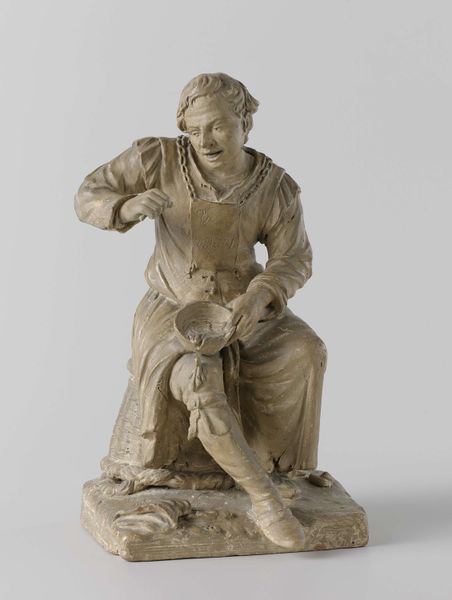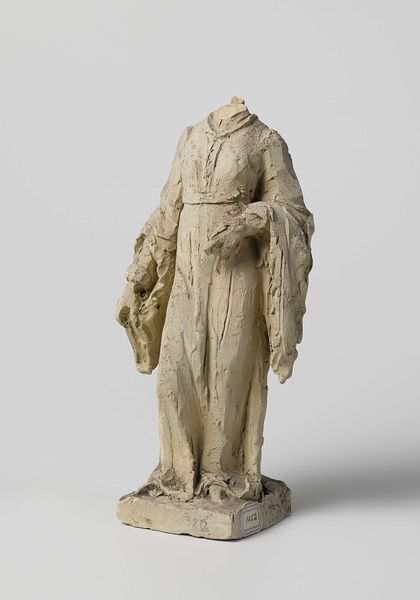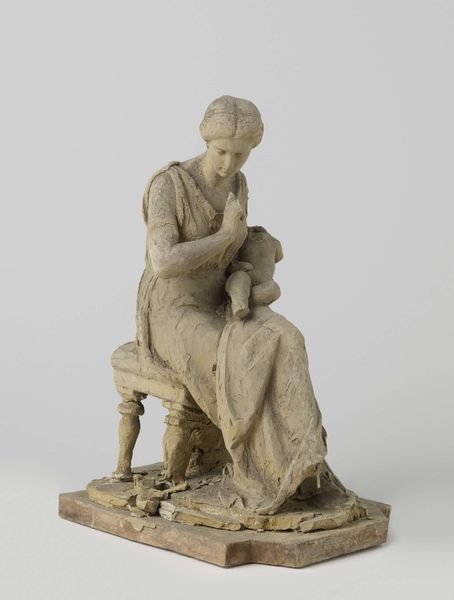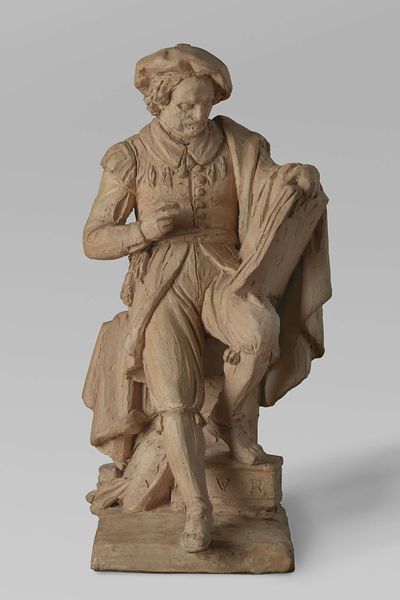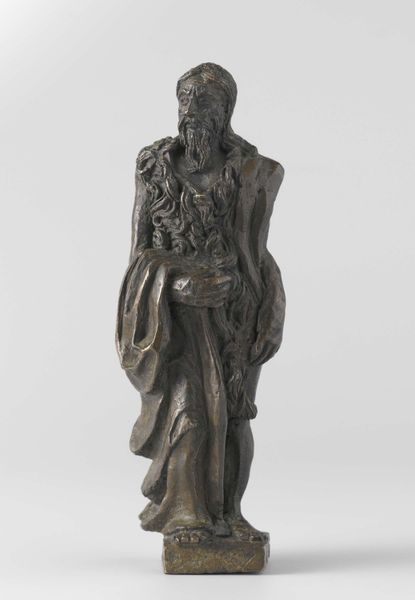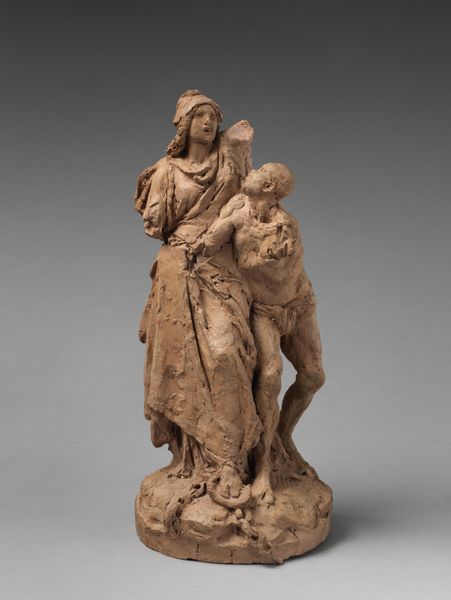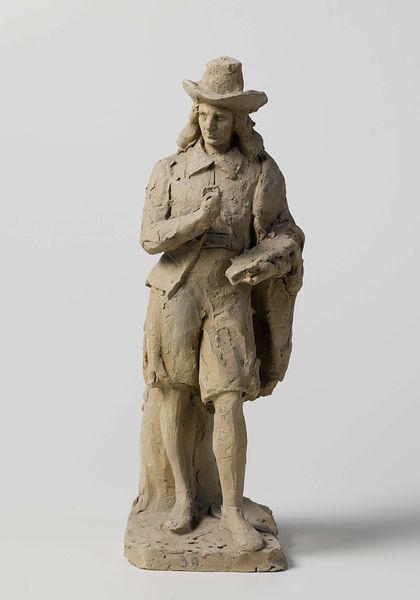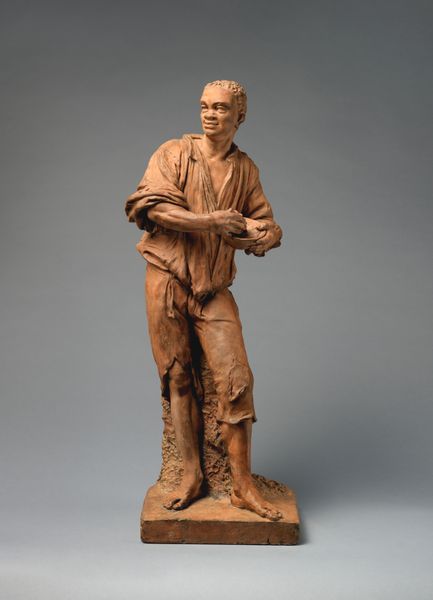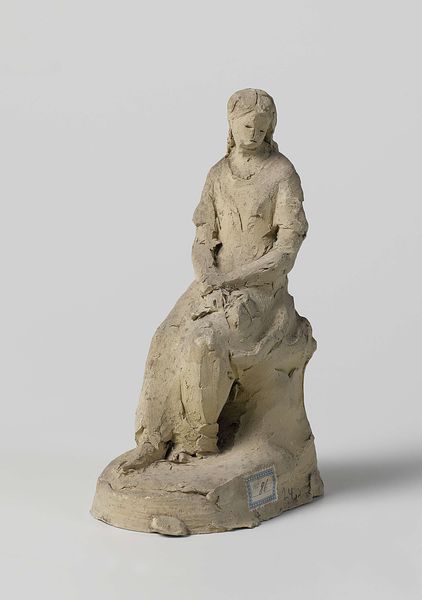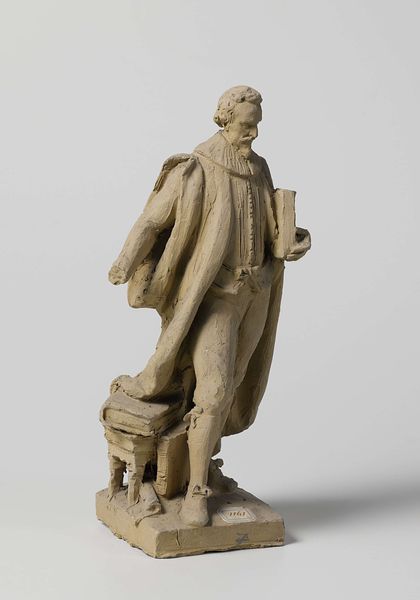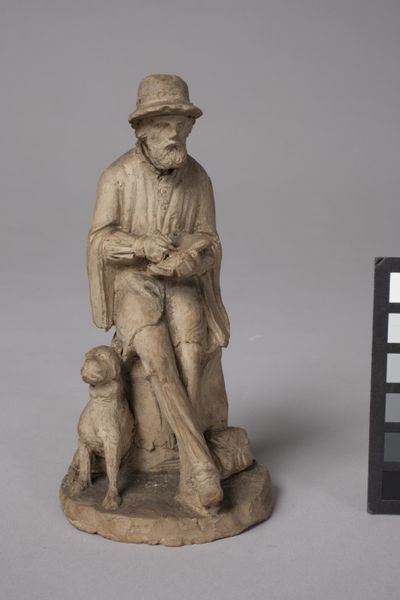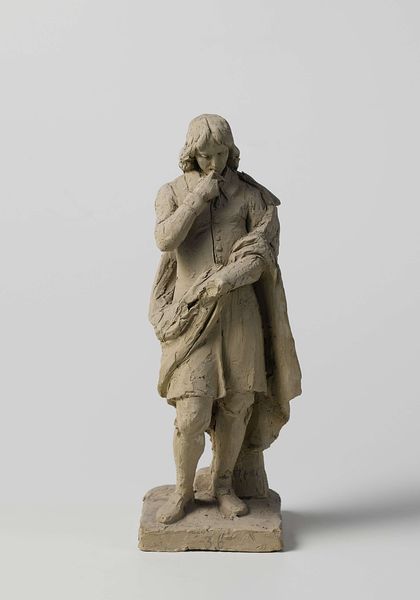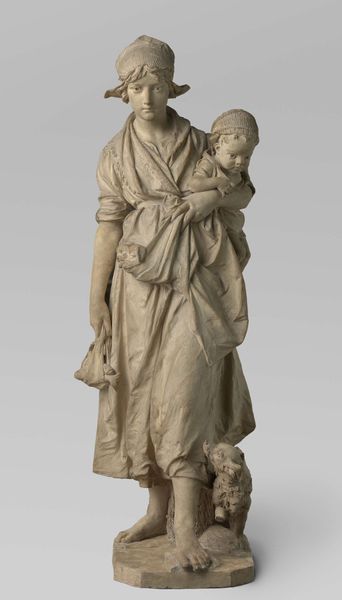
bronze, sculpture
#
portrait
#
neoclacissism
#
sculpture
#
bronze
#
sculpture
#
academic-art
#
statue
Dimensions: height 23 cm, width 10.5 cm, depth 8.5 cm
Copyright: Rijks Museum: Open Domain
Eugène Lacomblé produced this plaster design for a Hugo de Groot monument in the late nineteenth century. Such public sculptures embodied civic pride, but they also told a particular story about the nation's past, defining who should be considered a hero and why. The choice of Hugo de Groot, or Grotius, as a subject is revealing. This Dutch jurist and scholar was a key figure in the development of international law. By holding a book, the design invites us to see Grotius as an intellectual. In the context of the late 1800s, a period of nation-building and legal reform, Grotius represented the power of reason and law in shaping society. Understanding this sculpture requires us to look at the social and political climate in which it was conceived, as well as the institutional forces that shaped artistic production and public taste. Researching the history of public monuments and the cultural values they promoted can shed light on this plaster design. Art, after all, is always made in a specific context and carries social meaning.
Comments
No comments
Be the first to comment and join the conversation on the ultimate creative platform.
